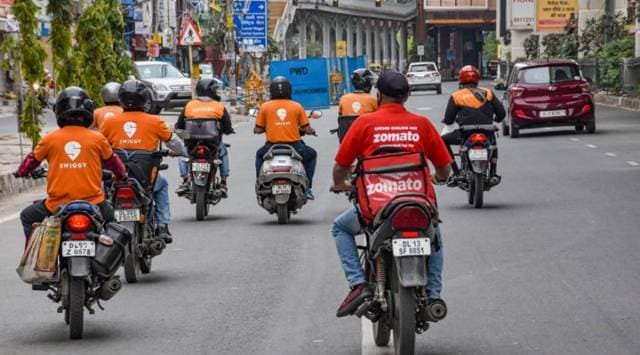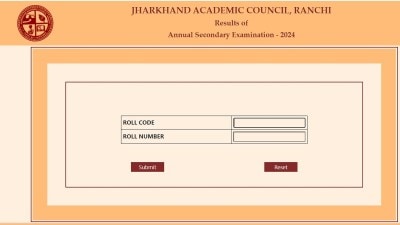- India
- International
How to pollution-proof doorstep delivery
To reduce the environmental impact, e-commerce companies need to promote zero-local-emission strategies.
 Delivery service providers need to convert their fleets to clean vehicles; private players can play a vital role in minimising the potential air pollution from this sector (PTI)
Delivery service providers need to convert their fleets to clean vehicles; private players can play a vital role in minimising the potential air pollution from this sector (PTI)By Trupti Deshpande and Anantha Lakshmi Paladugula
The near-death blow dealt by the COVID-19 pandemic to global economies notwithstanding, e-commerce companies have not just thrived but have witnessed a much higher growth rate. According to the India Brand Equity Foundation, e-commerce companies registered a growth of 31 per cent in the third quarter of 2020 compared to the same period in 2019. The consequent increase in demand for e-commerce deliveries has had an impact on the environment in urban areas and will inevitably lead to rise in emissions and air pollution.
To reduce this environmental impact, e-commerce companies need to promote zero-local-emission delivery strategies. While “true” zero emission vehicles are still some distance away — even electric vehicles (EVs) are ultimately powered by the grid fuelled primarily by thermal power plants — the realisation of zero local emissions will go a long way in reducing air pollution in major cities.
On an average, major e-commerce players in India such as Amazon, Flipkart and Bigbasket deliver around 1.5–2 lakh orders per day; 65 per cent of this demand comes from just five cities, namely, Delhi, Mumbai, Chennai, Kolkata and Bengaluru. This demand increases significantly, by 1.5 times, during the festive season. For instance, according to a report in Business Insider, Flipkart witnessed a 10-fold increase in shipments during the Diwali festival sale this year compared to the same period last year.
Though there are no conclusive numbers yet, the increased sales of commercial vehicles, such as mini-trucks and pick-up vans, during the pandemic is proof that the e-commerce industry helped the automobile sector stay afloat when it was struggling because of hugely decreased demand. However, these are mostly conventional vehicles and may lead to environmental impacts in the long run. According to a World Economic Forum study on the future of the last-mile delivery, the increase in demand will lead to an increase in emissions by 32 per cent globally.

Introduction of electric vehicles (EVs) and non-motorised transport (NMT; walking and cycling), and optimising delivery trips are a few of the solutions for realising sustainable last-mile deliveries in urban areas. Flipkart and Amazon have recently announced plans to introduce EVs in their delivery fleet. While Flipkart aims to convert 40 per cent of its fleet to EVs, Amazon plans to introduce 10,000 EVs in India in the near future. However, the introduction of EVs comes with challenges as electric transportation is still an evolving segment and not a run-of-the-mill solution. In addition, the introduction of NMT needs strategic implementation and planning.
A major challenge is that most of the e-commerce companies outsource the logistics and last-mile delivery. These delivery service providers need to convert their fleet to clean vehicles. Additionally, the location of warehouses pose a challenge, with a majority of them situated in the outskirts due to affordable rentals.
Return deliveries (in case the addressee is not available or when goods are exchanged) add to the cost of operation, increasing the man-hours and the travel/trip length per order. The different categories of delivery slots (priority, same day, free, etc.) also complicate trip planning.
Delivery service providers need to convert their fleets to clean vehicles; private players can play a vital role in minimising the potential air pollution from this sector. DOT, a Delhi-based start-up, provides EVs to Swiggy, Amazon, and Bigbasket for last-mile delivery. Further, leased EVs can be a viable option for both delivery service providers and e-commerce companies. The latter can even forge tie-ups with EV manufacturers to directly lease the required fleets.
The peripheral location of warehouses provides an opportunity for not only EV implementation but also traffic reduction within cities, ultimately reducing emissions. Within cities, strategically located warehouses shared by multiple e-commerce players can make EV introduction financially viable through sharing of land and charging infrastructure cost, streamlining the flow of heavy and light commercial vehicles, efficient fleet utilisation, and ease of operation for delivery service providers.
A potential solution to reduce the travel required by delivery executives is to set up a pickup point network, with smart lockers every 1 km or so, considering the location-wise number of shipments. Bus stops, shopping malls, etc. could be used as potential locations for such lockers. Such a network can also open up the option of NMT delivery to the consumer’s doorstep. Gated communities can install lockers at the entrance to avoid travel inside their premises.
Cities need to understand delivery movements, as well as the location of warehouses, consolidation centres, and delivery hotspots to prioritise sustainable last-mile delivery. Further, assessing the socio-economic and environmental impacts of urban last-mile deliveries and freight movement will help cities develop sustainable transport policies. Zero-emissions vehicles (electric or non-motorised vehicles), off-peak-hour deliveries, centralised pick-up points, and a network of freight hubs throughout a city are some of the solutions to meet the growing demand of urban last-mile deliveries. Finally, to realise long-term sustainable mobility, cities need to develop urban freight policies with an emphasis on strategic interventions in last-mile delivery.
The writers work in the area of environment and the ecosystem at the Center for Study of Science, Technology and Policy (CSTEP), a research-based think tank
EXPRESS OPINION
More Explained
Apr 19: Latest News
- 01
- 02
- 03
- 04
- 05









































